"By the time he was 19, Fawcett had saved $1,000 which was enough to pay for two years at [London's Slade School of Art]. He trained there from 1922 to 1924. In those days the school prided itself in stripping away all gimmicks and artifice and focusing on pure drawing skills.
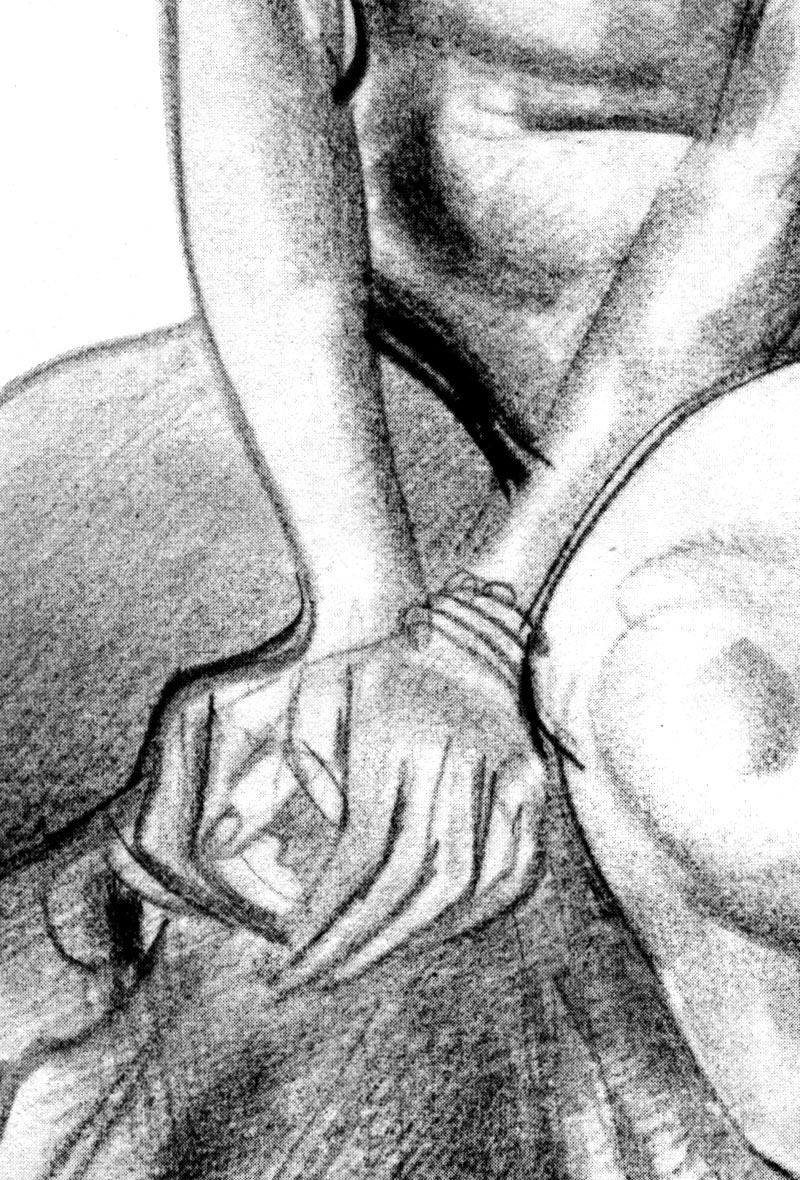
Fawcett recalled, "At Slade, academic and searching drawing was so insisted upon that draftsmanship became second nature. I did nothing but draw from the model for eight hours a day for two years."
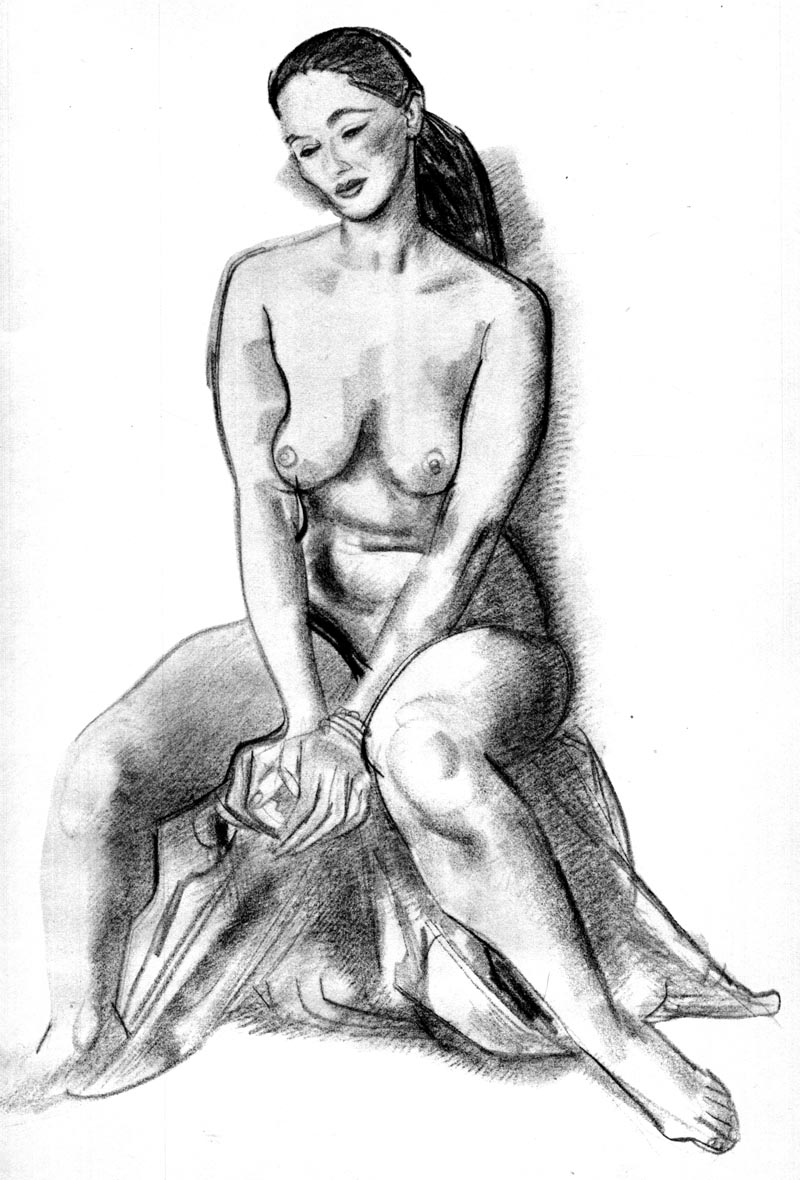
Fawcett never took classes in anatomy. When he arrived at school he assumed all artists needed to know anatomy so he attended a lecture at a nearby medical college. However, he quickly decided he was better off relying on his own powers of observation than on memorizing anatomical diagrams. "I am not interested in exploring the figure by scientific means."

"Patella, clavicle, femur and pelvis are medical terms, not the language of drawing. It is difficult to know what to say when confronted by the disbelievers who say, 'but of course you must know anatomy - you've got to!' I can only repeat that I do not."
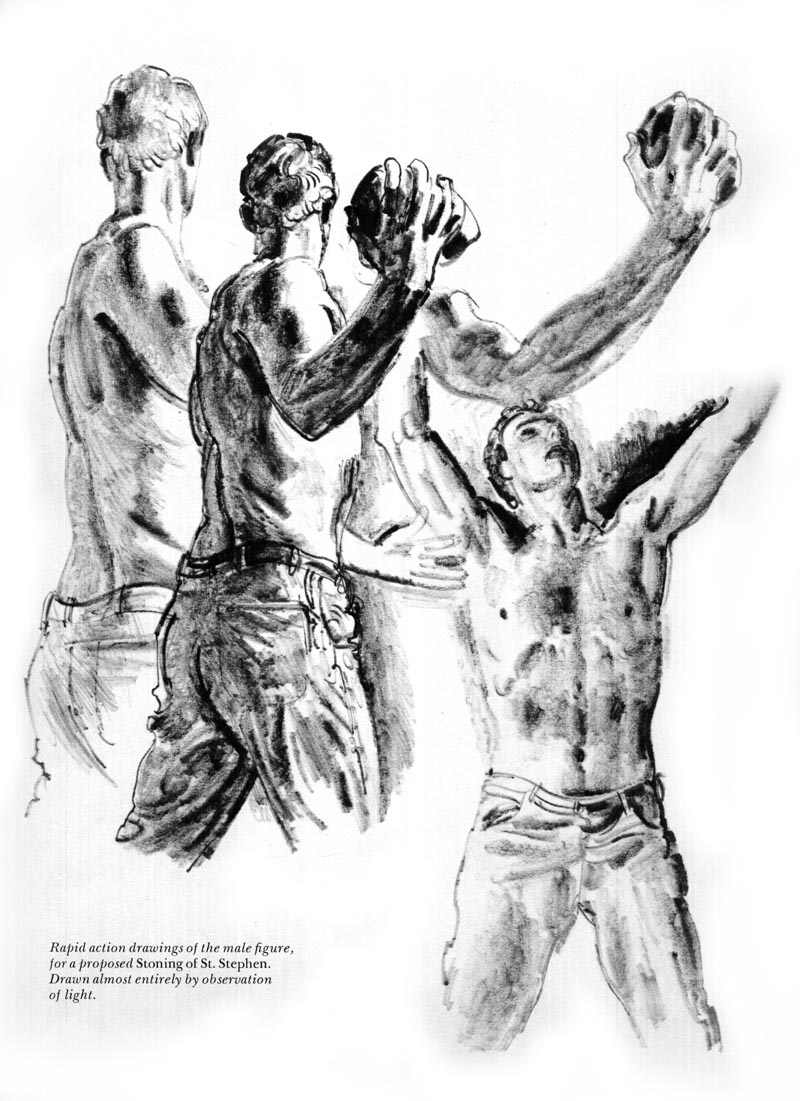
Similarly, Fawcett never took a class or received formal training in the rules of perspective.
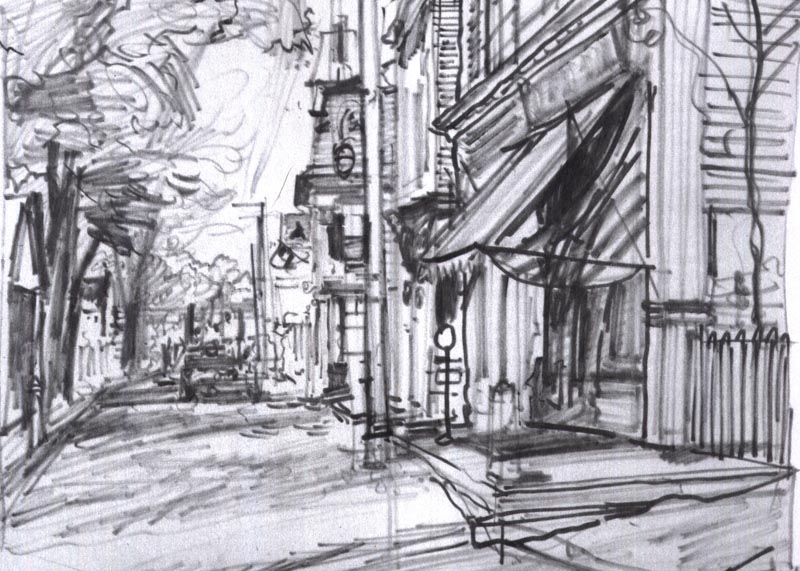
Later in his career Fawcett said, "I know very little of academic perspective -"

" - I only know whether things look right."
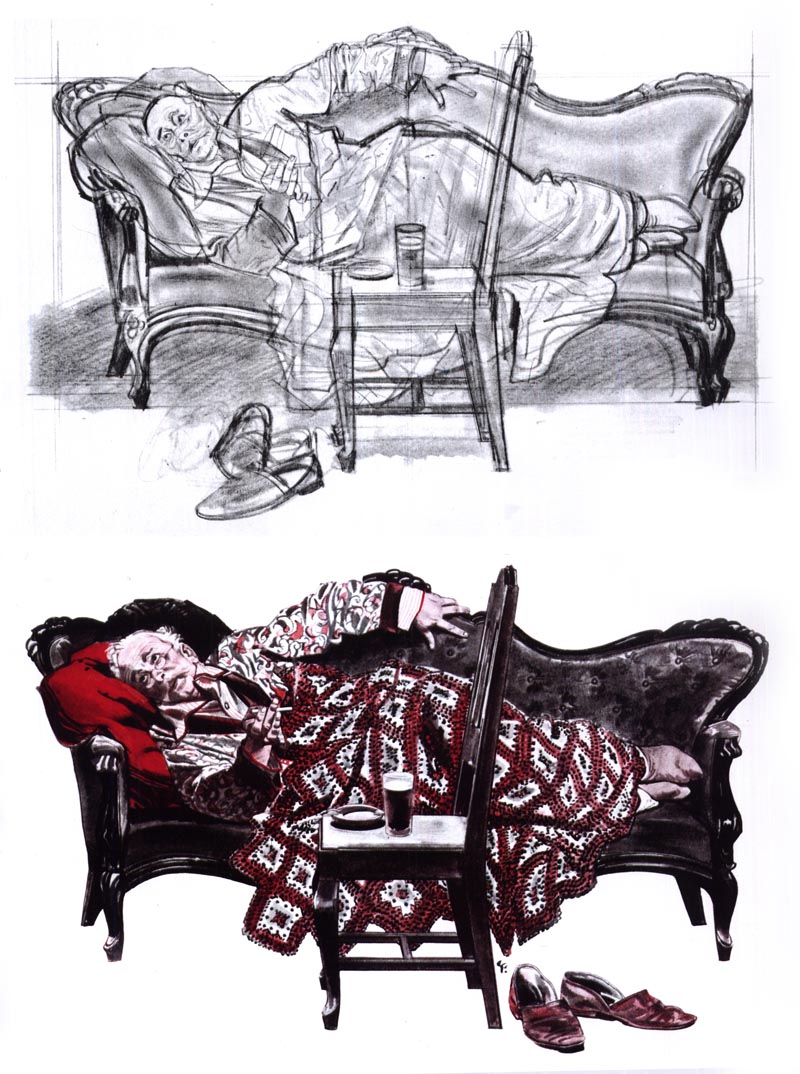
The new Robert Fawcett book is available now from Auad Publishing.

* Some of today's images are taken from Robert Fawcett's "On the Art of Drawing" ©1958 Watson-Guptill Publications
So... basically he learned everything the hard way?? ;)
ReplyDeleteHeh, just kidding - not everyone has an analytical left brain to go along with the artistic right brain. Everyone who learns art learns in a different way, and formal study is less comfortable to some people than just doing work directly and learning from experience.
Two years of 8-hour days drawing from model is at least 2,000 hours of practice. I think anyone with an artistic bent could get really good in that amount of time!
Jeff; yeah, it is - and I think Fawcett was also trying to say that as artists, we learn from observation and from understanding basic construction. We don't need scientific understanding ( of muscles and/or perspective ) to know when something does or doesn't look right. In fact, having that knowledge can sometimes results in technically perfect but also "static-looking" work. That's my interpretation anyway ;^)
ReplyDeleteAND THE BOOK IS KILLER! Get it!
ReplyDeleteLeif, I think both you and Jeff Z make good points. When teaching, I found that some students picked up drawing skills and perspective, without a lot of formal training, while others struggled, even with a lot of formal training. Recently, an amateur fine artist friend struggled with perspective, and just couldn't get it right. She knew it looked wrong, but she wasn't drawing what she was observing. She couldn't see the visual logic behind perspective. She began studying the principals of perspective from books, and her perspective has improved considerably. She just needed to learn the formula. I also have known artists who draw all the time over several decades, but the human proportions are always whacky. They maintain they just can't draw academically. However, they are consistent with their individual style.
ReplyDeleteI learned perspective and anatomical proportions before I went to art school, by just drawing what looked right to me. However, art school helped refine and further develop those skills, along with other necessary skills.
Tom Watson
Not long ago I listened to an interview with Jack Kirby. When asked how he learned to draw Kirby said he kept drawing until it looked right.
ReplyDeleteSimple enough but as you know it's never that easy.
This book looks great. Thank you Leif for spending the time to highlight it. I plan on ordering a copy.
I just wanted to say that I love your blog! My friend just shared your site with me ... I only wish I had this when I was an illustration student! Thanks for all of the FANTASTIC inspiration - I will definitely be checking back frequently! :)
ReplyDeleteBest,
Emily
Well, obviously he did have an understanding of perspective as you can see his pale radiating lines in the pencil drawn interior.That's pretty key to creating a sense of spatial depth with interiors and street scenes.
ReplyDeleteAl Dorne, who I don't usually bracket with Fawcett, also claimed to rely solely on observation rather than anatomical knowledge.Although this can make you reliant on models or photo reference.
I think Ernest Norling's - "Perspective Made Easy" is the best introduction to perspective for beginners. It is a low cost Dover reprint of a 1930s original.
ReplyDeleteVery clear and practical. Some perspective books are aimed at the (extinct) architectural renderers, and are much too mathematical.
There is, in my opinion, no need for perspective in a picture to be mathematically correct, so long as it conveys a clear idea of the space the characters are in. The viewer needs to know at once where he is standing.
Remo; just to clarify my point: what I think Fawcett was saying is that one needn't study medical anatomy - often considered very key by many students and many professionals - to know how to draw well. If Fawcett is on the one hand in this regard, perhaps one could say Burne Hogarth or George Bridgeman would be at the opposite extreme of that opinion. Similarly, in regards to perspective, what Fawcett is practicing when he draws those faint key lines, I learned at age 13 from "How to draw Comics the Marvel Way". There may be some scientific basis for this simplified understanding of perspective, but its not hardcore mathematical perspective. Still, it was enough for me to be able to know how to draw things so they 'look right'. At age 17 in my senior year drafting class, our teacher taught us mathematical/scientific perspective. Very dreary, overly complicated (for the artist) and absolutely mathematically accurate. But, as Fawcett said, he didn't know this type of perspective and didn't believe it was important (again, for the artist) to know it. I agree.
ReplyDeleteLeif:
ReplyDeleteI think what you say is correct.
Armed with a few basic principles and the ability to see and think, it should be possible to solve most drawing problems.
1 Superficial rather than deep lying anatomy and
2 Vanishing points and Eye level for perspective.
I think How to Draw the Marvel Way is a somewhat under-rated book.John Buscema was a first class figure artist with a great sense of design and construction.His 60s work on the Avengers an Silver Surfer is as dynamic as it is solid.
On the subject of Burne Hogarth's contribution I'm not so sure.And Bridgman is fine if you want to create Renaissance sculpture,his figures never look like real living forms to my eyes.
But that's just my opinion, others may really rate them.
I think Loomis's books are probably as good as it gets for study.
Wow! I better start sketching more:)
ReplyDeleteand things and examples here DO look amazingly right!
ReplyDeleteI have the book and it is INCREDIBLE. Everyone get it. Now.
ReplyDeletenice sketches !
ReplyDeletelike like like :]
I have the talent of drawing, but I Have the right part of brain stronger so it was easy for me. And I think I learn quickly to draw different things. So it is pretty amazing that the author was so stubborn :D
http://agisense.blogspot.com/
This comment has been removed by the author.
ReplyDeleteLeif, I had to smile when you mention learning at age 13 from " How to Draw Comics the Marvel Way". That was the one and only book that was a requirement for my students, when I taught drawing for storyboards. It' s an excellent, easy to understand way of drawing dramatic perspective, character studies and proportions that look right, even if they are exaggerated. There wasn't another book that I knew of that had everything I wanted my students to learn for storyboard illustration. A few students turned their nose up, because of the comic book connotation. So, as I gave them their supply list, I requested they bring the book to class each time.. that when doing storyboards, you don't have time for a model session, and therefore have to draw from your imagination.
ReplyDeleteI would recommend the Marvel book for any illustration student along with the Fawcett book, regardless of what direction they are thinking of going. Quality art never loses their validity.
Tom Watson
Just got my copy of this great book, thanks Leif. I completely agree with what you and Tom say. IMO doing comic books the traditional way requires a fair combination of basic formal training and observation, so that you can develop your own ability to draw from imagination with professional results..
ReplyDeleteThat will help you to do a good job when you don't have the perfect reference, and prevent you for being too static when you rely on photos. The Buscema book is a must-read to me! (sorry for my english)